When to Switch From Bassinet to Seat Position
Typically, parents consider making the transition from a pram bassinet to a stroller seat when their baby is around 4-6 months of age. However, this is a general guideline and not a hard-and-fast rule. The right time to make this move varies from baby to baby and depends on various developmental milestones and several other factors. Here are some signs to watch out for:
1
Good Head Control
- Your baby can lift their head 45 to 90 degrees when placed on their tummy.
- When supported in a sitting position, your baby can hold their head steady without it bobbing forward or to the side.
- Your baby turns their head in response to visual and auditory stimuli, such as following a toy or turning toward a sound.
- When held in a standing position with support, the baby can balance their head in alignment with their body.
- When pulled up from a lie-flat position to a seated position, there’s no lag—the head moves in line with the body.
- Your baby can turn their head side to side without difficulty when awake and alert.
- Your baby can hold their head up for extended periods (more than a few moments) without tiring.
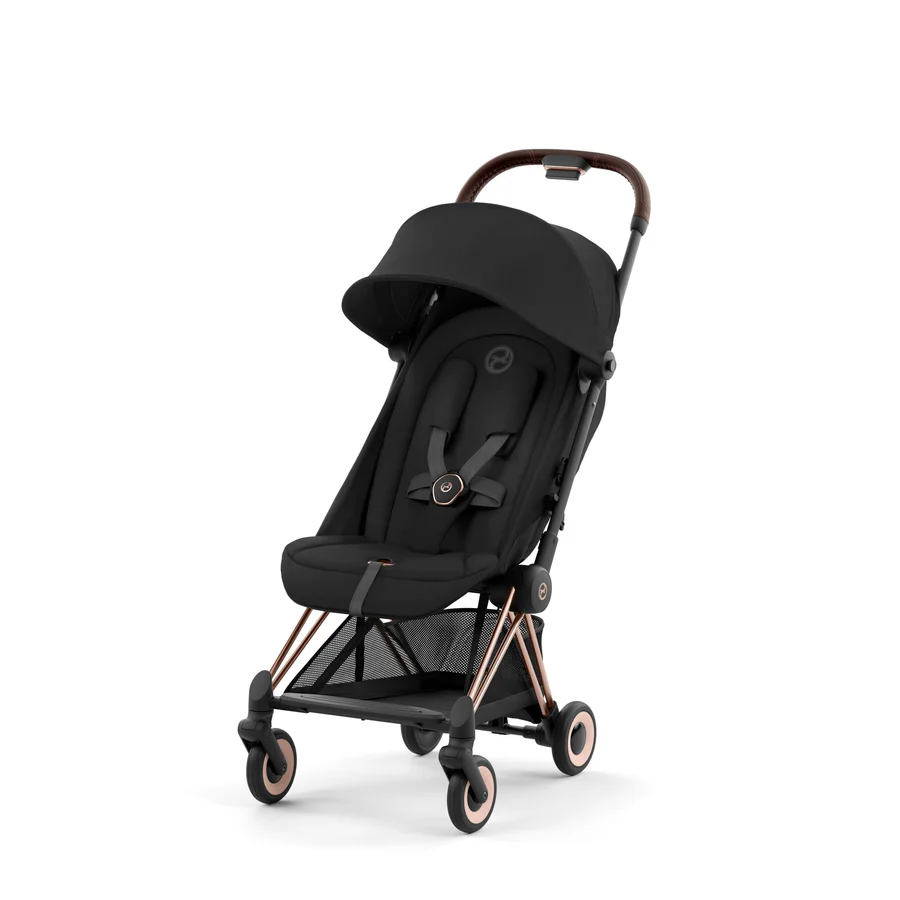
2
Ability to Sit Up
- Baby can sit in a semi-upright position when you support their back.
- When seated with support, your baby’s upper body doesn’t flop forward.
- While seated, your baby reaches for toys or other objects without falling over, indicating good trunk control.
- During tummy time, your baby can push up on their arms and maintain a mini-pushup position
- Strong, sustained head control while seated or when being moved to a seated position.
- With some back support, your baby can sit up without using their hands to balance.
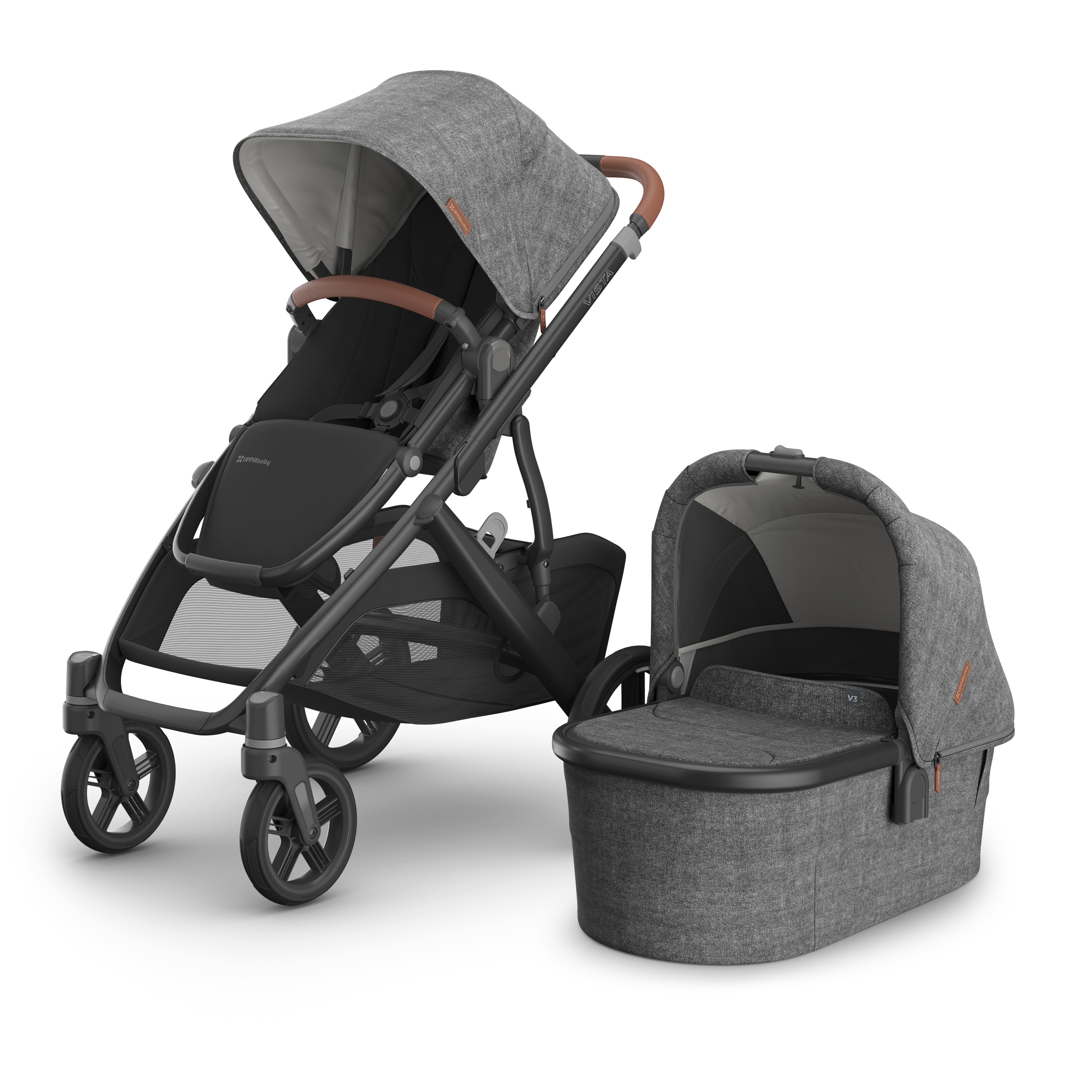
3
They’ve Outgrown the Bassinet
- If your baby’s head or feet are bumping against the ends, or they seem cramped, it’s time for a change.
- Your baby seems uncomfortable or unable to settle, possibly due to limited space.
- If your baby is waking up from their naps more frequently and seems disturbed by the limited space, it might be time to move them to a more spacious sleep environment.
- Your baby is more alert and interested in their surroundings and may benefit from the more open environment of a crib or stroller seat.
- If the bassinet looks visibly cramped or if there’s not enough room for your baby to stretch and move their arms and legs.
- Your baby is rolling over, pushing up on hands, or attempting to pull themselves up, which could make a bassinet unsafe.
- Check the manufacturer’s guidelines for weight limits to see if your baby hasn’t exceeded them.
- If your baby is making efforts to climb out, the contained environment is no longer safe.
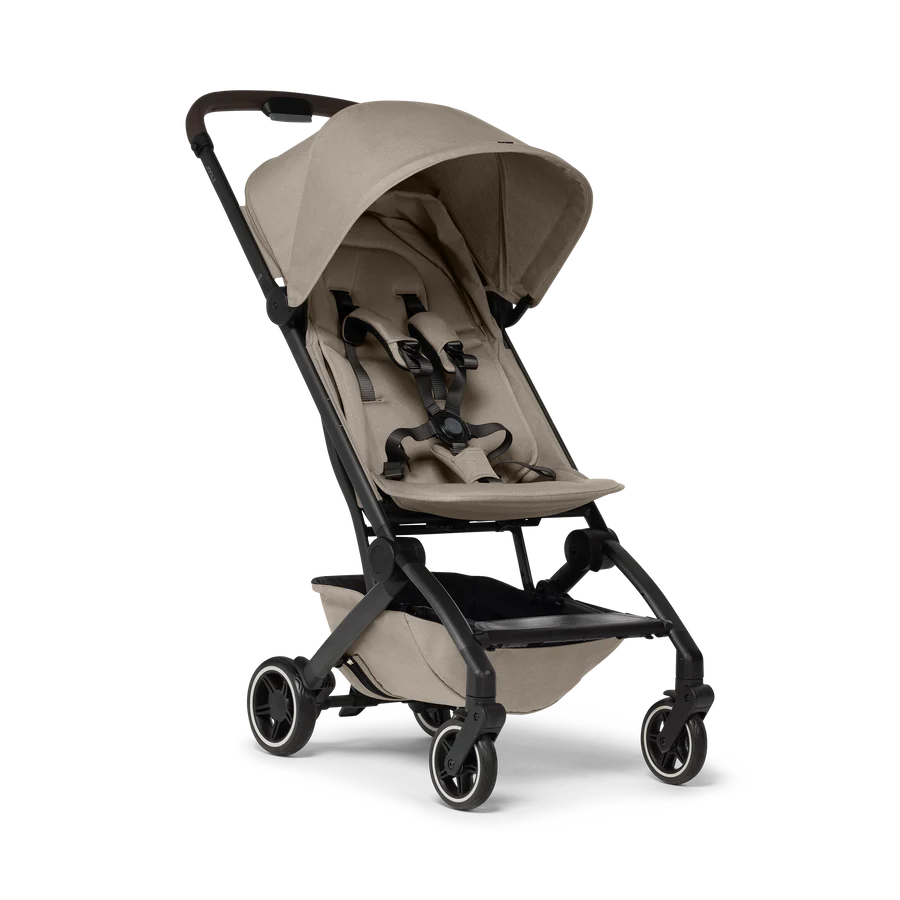
4
Increased Curiosity and Engagement
- The transition from the bassinet to the stroller seat should be considered when the baby displays a heightened sense of curiosity about their surroundings.
- It’s time to make the switch when the baby shows eagerness to actively engage with and explore their environment.
- Moving to the stroller seat is appropriate when the baby demonstrates a desire to sit up and have a more comprehensive view of their surroundings.
- When the baby starts to show an interest in taking in the sights, sounds, and activities happening around them, it’s a good indication for the transition.
- The switch becomes timely as the baby becomes increasingly alert and responsive to their external stimuli, indicating a readiness to engage with the world from a seated position.
- Ultimately, transitioning to the stroller seat aligns with the baby’s developmental milestones and their evolving curiosity and engagement with the environment.
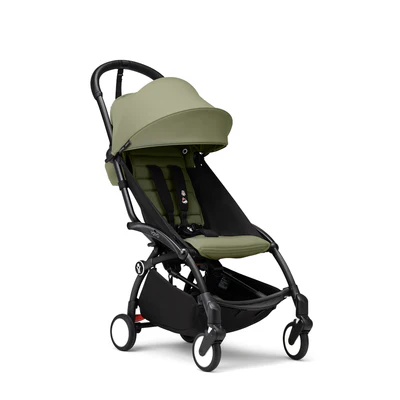
What Are The Benefits of Changing From Pram Bassinet to Seat?
Switching from a pram bassinet to a seat offers several advantages as your child grows and reaches new developmental milestones. Here are some of the key benefits:
- Better View for Baby: Moving to a seat allows your child to sit up and take in their surroundings, contributing to sensory development and keeping them entertained during strolls.
- Improved Interaction: Being in a seated position makes it easier for your baby to see you and interact with you and others, which can be beneficial for emotional and social development.
- Feeding Convenience: Many stroller seats come with or can accommodate a tray, making on-the-go feeding more convenient.
- Adjustable Positions: Stroller seats often have multiple reclining positions, offering versatility for napping, sitting upright, or even lying flat, thereby accommodating various needs and moods.
- Increased Safety: As babies grow and become more mobile, a stroller seat equipped with a 5-point harness can provide a safer environment compared to a bassinet.
- Space Efficiency: For parents, strollers with seats often offer better storage solutions, including larger or more accessible baskets and pockets.
- Longevity: Seats often have higher weight and age limits compared to bassinets, meaning you’ll get more extended use out of your investment.
- Ease of Transport: Stroller seats are generally easier and lighter to fold down than bassinets, making them more convenient for travel and storage.
- Compatibility with Activities: Stroller seats are often more adaptable to different activities, such as jogging or traversing rougher terrains.
- Promotes Physical Development: The change helps the baby work on core strength and balance as they get used to sitting upright and absorbing the motion of the stroller.
Choosing the Right Seat
As you know, each baby seat comes with its own set of features, safety guidelines, and manufacturer recommendations for age and weight limits. That’s why choosing the right seat for the transition from a bassinet is crucial for both safety and development. An appropriate seat ensures proper restraint and supports your child’s growing spine and head, thereby impacting comfort and overall well-being. Additionally, the right choice provides ease of use for parents and aligns with safety standards, making it an essential factor in a smooth transition.
1
Single Prams
- Designed to support spinal development, especially important in the early months.
- Often comes equipped with a 3- or 5-point safety harness to keep the baby securely in place.
- Usually includes an adjustable rain cover to protect your baby from sun, wind, and light rain.
- Typically comes with a storage basket underneath for diapers, bottles, and other essentials.
- Equipped with brakes to securely stop and park the pram.
- Many modern prams are foldable for easy storage and transport, though they tend to be bulkier than strollers.
- Features may include mesh windows or special fabric for better airflow.

2
Double Prams
- Ideal for families with multiple young babies
- Usually offers individual reclining options for each seat, allowing one child to sit up while the other lies down
- Higher weight limits to accommodate the combined weight of two children
- Extra-large storage baskets or multiple pockets for holding essentials like diapers, snacks, and personal items.
- Safety harnesses for each seat unit to ensure that both children are securely strapped in.
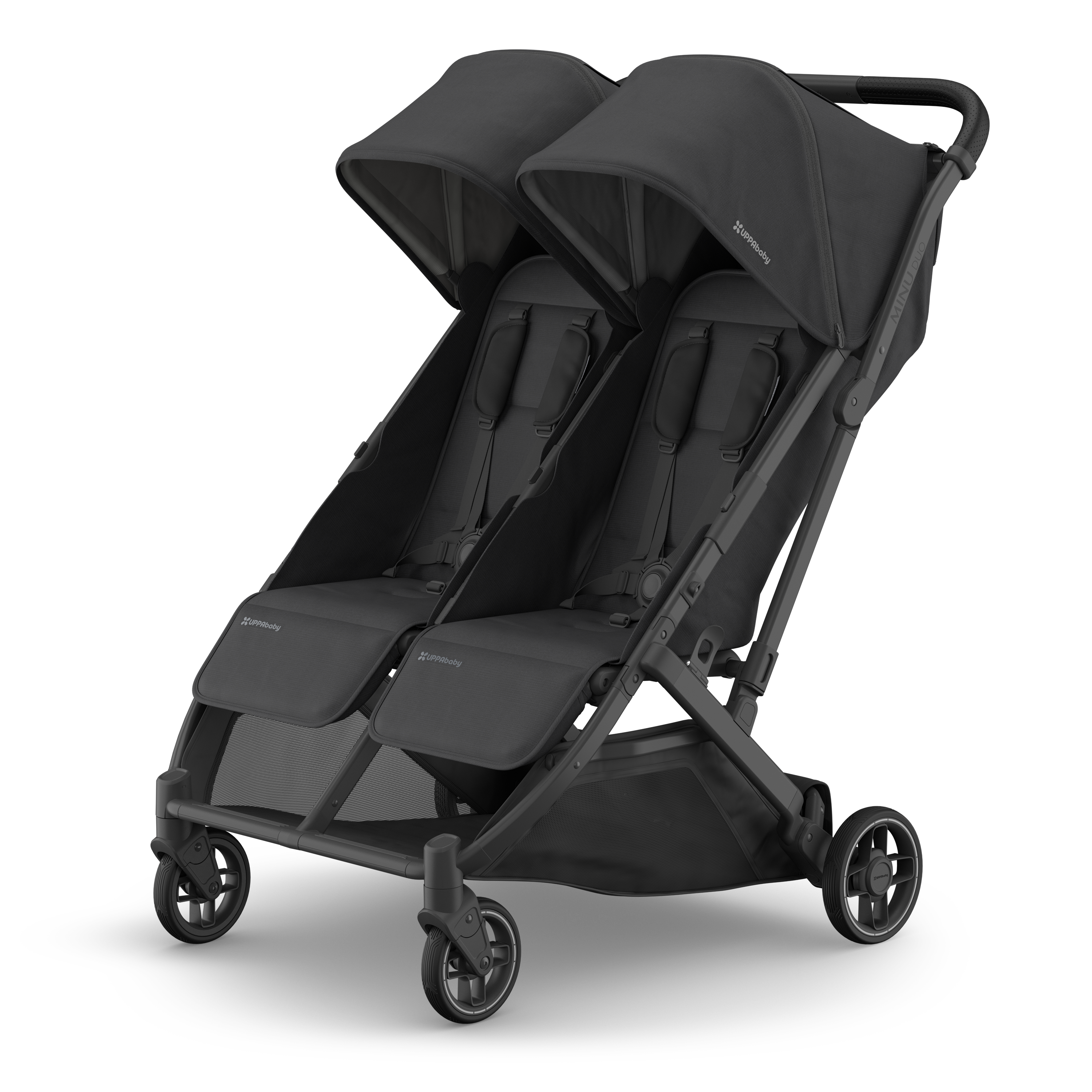
3
Stroller
- Ideal for toddlers and year-old babies who can sit up unassisted
- Generally lighter than prams, making them easier to maneuver and carry.
- Designed for easy, quick folding, ideal for on-the-go families and for storage.
- Often comes with multiple recline positions for the child’s comfort during naps and while sitting up.
- Front wheels that can swivel for easy maneuverability and can usually be locked for stability.
- Foot-operated or hand-operated brakes to securely stop the stroller.
- Some strollers or pushchairs are designed for a variety of terrains, featuring larger, durable tires.
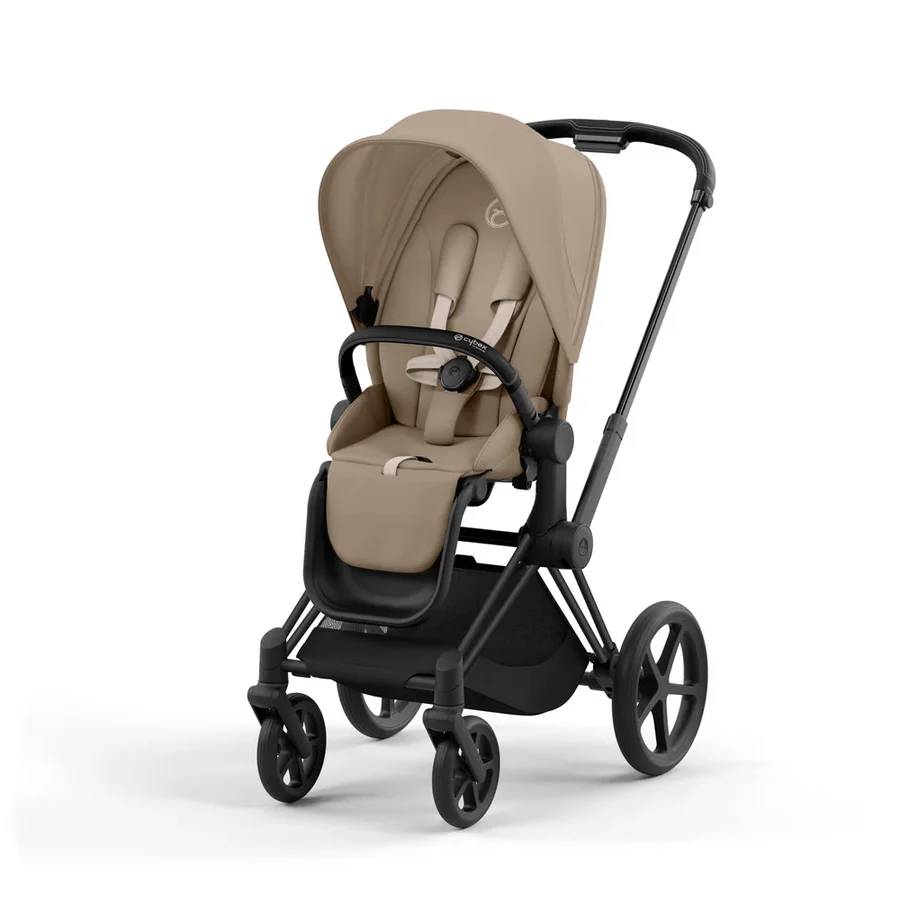
4
Travel System
- Combines a stroller frame, detachable car seat, and sometimes a carrycot or bassinet attachment, providing an all-in-one solution for strolling, car travel, and even sleep.
- Comes with a car seat that can be easily snapped into the stroller frame as well as the car seat base for vehicular travel.
- The car seats can usually convert from rear-facing for newborn babies to forward-facing for older babies and toddlers.
- Allows for a smooth transition from car to stroller without removing the baby from the seat, ideal for not disturbing a sleeping child.
- Designed to accommodate a broad range of ages and weights, making it versatile and longer-lasting.
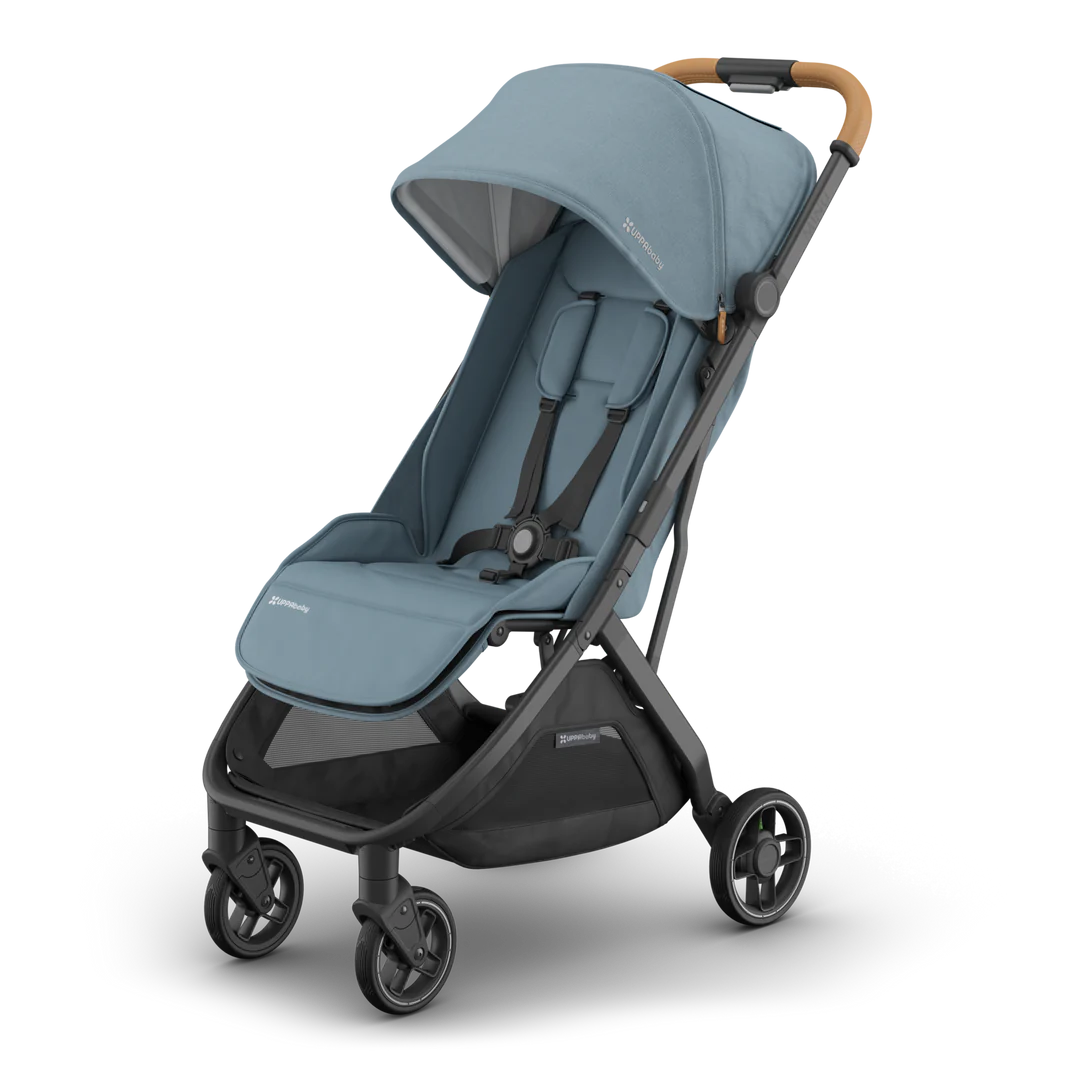
What to Look For in a Baby Seat
When selecting a baby seat, whether it’s for a car, stroller, or indoor use, there are several important factors to consider to ensure both safety and comfort for your child. Here’s what to look for before buying your new baby seat:
Safety Features: This is the most important aspect to consider when shopping for a baby seat. Always check if the seat meets or exceeds the relevant safety standards for your region.
Convenience: Opt for seats that have removable and machine-washable covers for simple cleaning, are easy to install, and feature conveniences like cup holders or storage compartments.
Adaptability: Look for seats with adjustable weight and height limits to accommodate your child’s growth. Some seats are convertible, changing from rear-facing to forward-facing, and sometimes even converting into a booster seat, providing a long-term solution.
Portability: Consider the weight of the seat and how easily it can be installed or removed. Features like quick-release buttons can make this process much simpler.
Compatibility: If you’re looking at a car seat, check to see if it’s compatible with your stroller if you plan to use it as part of a travel system. Additionally, make sure the seat fits well in your car and is suitable for your specific vehicle model.
How to Make a Smooth Transition from a Bassinet to a Seat
Transitioning from a bassinet to a seat should be planned carefully, taking into account both safety guidelines and your child’s developmental readiness. Here are some steps to guide you through this important change:
1
Make the Transition Gradual
- Start by placing your baby in the seat for short periods under supervision.
- Keep your baby engaged while in the seat and observe any signs of discomfort or unhappiness.
- Use cushions or rolled-up towels for extra support if the seat is too roomy.

2
Check for Safety and Comfort
- Ensure the stroller seat has a 5-point harness system to keep your baby securely strapped in.
- The harness should fit snugly but not too tightly, allowing you to slide a finger between the harness and your baby.
- Figure out the right seat recline angle. For car seats, make sure the angle is as per the manufacturer’s guidelines, generally a 45-degree angle is considered safe.
- Consult with your pediatrician before making the transition, especially if your baby was born prematurely or has any developmental delays or health concerns.

3
Review and Adjust
- Keep an eye on how well your baby is adapting to the new seat. Watch for signs of discomfort or discontent, like fussiness or physical marks from straps.
- As your baby grows, you’ll need to adjust the harness slots and possibly remove or add cushions. Keep an eye on the seat’s weight and height guidelines.
- Always double-check the harness, the buckles, and attachments. Ensure they’re secure and in functional condition.
- If other family members or caregivers will be using the seat, make sure they are also familiar with the correct usage and safety checks.

4
Assess Readiness
- Make sure your baby can hold their head up and demonstrate strong upper body control, usually occurring between 4 to 6 months of age.
- Ensure your baby can maintain a steady head position, a crucial indicator of their readiness for transitioning to a seat.
- Check that your baby exhibits good control over their upper body movements before introducing them to a seat.

Make the Big Transition Easier with Metro Baby!
Transitioning your little one from a bassinet to a seat marks a beautiful chapter in their growth journey. This process, while thrilling, requires careful planning and a focus on safety and comfort.
Don’t go through it alone—Metro Baby is here to help you make this transition as smooth as possible. From top-of-the-line car seats to versatile strollers, we’ve got you covered. Dive into our collection to find the perfect fit for your baby’s next big step. Embrace this change with confidence, and let Metro Baby be your trusted companion along the way!

